Backpacking in Tibet is not possible at present, since all international tourists are required to join an organized tour and obtain a Tibet Travel Permit to visit the region.
The best choice is to join a small group tour, which is not only more affordable than a private tour, but also offers the chance to meet like-minded travelers. Also, by choosing a trustworthy local Tibetan agency like us, you can experience the authentic Tibetan lifestyle and culture up close.
Keep reading this guide about backpacking in Tibet to learn how to travel in Tibet solo, cheaply, and authentically. Prepare for a seamless and worry-free adventure on the Roof of the World!
Is Backpacking in Tibet Possible? No, Joining an Organized Tour is Needed
Independent backpacking is not allowed in Tibet. According to current regulations, all international travelers visiting Tibet must join an organized tour arranged by a licensed local travel agency.
The rule mainly exists to ensure the safety and smooth travel experience of travelers, and to help protect the delicate natural environment of the plateau. Your travel agency will not only design a pre-arranged itinerary with a local Tibetan guide, but also handle the application for the Tibet Travel Permit on your behalf. Without this permit, you cannot even board a flight or train to Tibet.
While you may not be able to go backpacking in Tibet, there are still ways to fulfill your dream of exploring Tibet without a higher cost. Choosing a trustworthy travel agency can also help you experience the region more authentically and smoothly. Keep reading to learn how to make it happen.
Join our most popular Mount Everest tour to enjoy a smooth journey!
Joining a Small Group Tour is the Best Solution for Budget Backpackers
For backpackers, joining a small group tour is the best choice to explore Tibet on a budget. Unlike large bus tours, small group tours usually have 4 to 12 participants, making the experience both personal and affordable.
1. Lower Cost Than a Private Tour
Private tours can be very expensive since you pay for everything yourself. However, on a Small Group tour, expenses for the guide, driver, accommodation and vehicles are shared among the group members—making the same itinerary much cheaper.
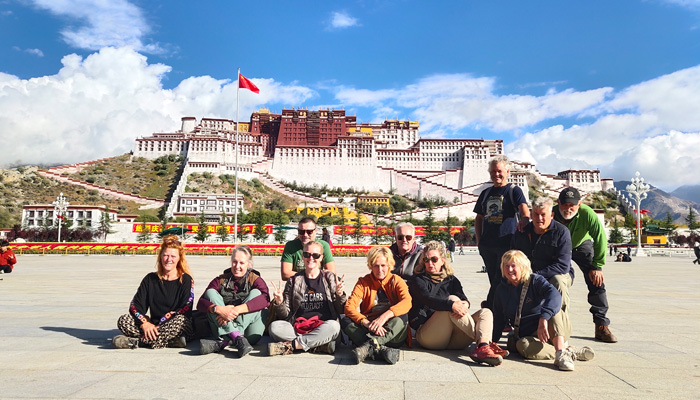 A small group tour in Tibet is much more cost-effective than a private tour.
A small group tour in Tibet is much more cost-effective than a private tour.2. Make New Friends on the Road
Solo travelers often look for travel companions online, often with little success. With a Small Group Tour, you will be traveling with others who share the same interests as you. And not only will they share the costs of certain aspects of the tour, but you will also be able to make some new friends along the way.
3. No Forced Shopping Stops through Us
Many travelers worry about the “compulsory” shopping stops often included in tours. With us, you’ll never be taken shopping unless you request it—and you can choose exactly where to go. We do not collect commissions or any other payments for taking you shopping.
4. Choices on Different Tibet Tour Routes
We offer a wide range of small group tours—from a short 4-day Lhasa City Tour to the classic 8-day Lhasa to Everest Base Camp Tour, the 7-day Lhasa to Kathmandu Overland Tour and the 15-day Kailash Manasarovar Pilgrimage Tour. From rich cultural landmarks to breathtaking natural scenery, our Small Group Tours cover all the iconic highlights of Tibet.
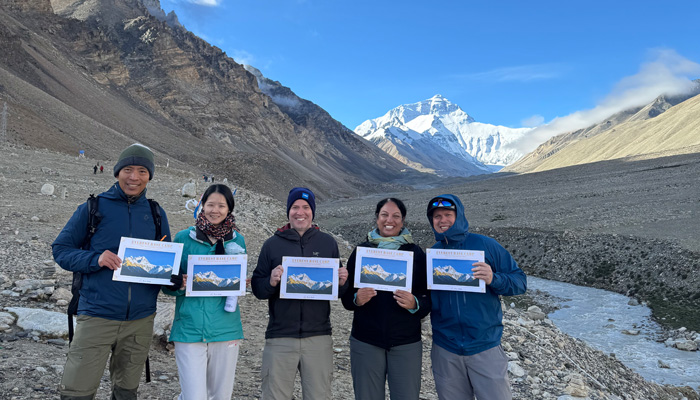 We offer a variety of small group tours, including the most popular route to Everest Base Camp.
We offer a variety of small group tours, including the most popular route to Everest Base Camp.We Offer Authentic Tibet Experiences to Keep the “Backpacking Spirit” Alive
Joining a pre-arranged tour doesn’t mean you have to lose your backpacking spirit. As the leading Tibet tour operator based in Lhasa, we ensure you experience an authentic journey with meaningful a connection to local life.
First of all, all our guides are locals born and raised in Tibet. Fluent in English, they not only lead your tours, but also share their personal stories and insights to help you better understand Tibetan culture.
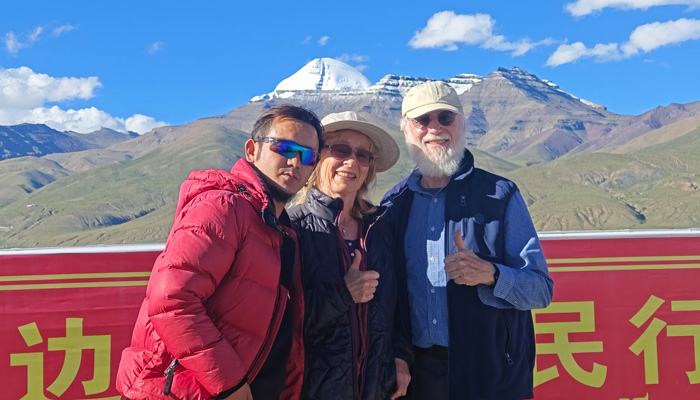 An elderly couple of our clients enjoyed a smooth journey to Mount Kailash with our local guide.
An elderly couple of our clients enjoyed a smooth journey to Mount Kailash with our local guide.Secondly, we arrange authentic stays and dining during your Tibet tour. Instead of modernized luxury hotels, you can stay in cozy Tibetan-style guesthouses. We also include meals at traditional Tibetan restaurants, featuring delicious local dishes such as Tibetan yak hotpot, tsampa, and butter tea.
Moreover, you will have chances to contact with locals. Our guide will take you to a local Tibetan tea house, where you can enjoy the Tibetan sweet tea alongside local Tibetans. When visiting Yamdrok Lake, you will even have lunch with a local family in their lakeside village home.
 We arrange a lunchtime visit with a local family when you explore Yamdrok Lake.
We arrange a lunchtime visit with a local family when you explore Yamdrok Lake.Last but not the least, we offer truly rewarding Tibetan cultural experiences. You can witness the interesting monk debates at Sera Monastery, take a meditation in the caves of Drak Yerpa nestled in the mountains, as well as learn how to make traditional Tibetan incense, etc. All these moments can take you closer to the soul of Tibet.
More Ways to Travel Cheaply in Tibet for Backpackers
In addition to joining a small group tour, there are more ways for budget backpackers to make the most of your trip.
1. Travel in the Off-season
The best time to enjoy lower prices is from November to March, during Tibet’s winter season. The weather in Tibet in winter is not that cold, and you’ll enjoy fewer crowds, cheaper hotels and flights, and breathtaking snowy landscapes.
When you join a Tibet winter tour with us, you will also enjoy up to 20% off the regular tour prices and even a free upgrade to 4-star hotels.
2. Take the Train to Tibet
Compared to flights, trains are relatively cheaper, especially during the peak season. You can start your train journey from major mainland cities like Xining, Beijing, Chengdu, etc. En route, you will enjoy the spectacular views of the Qinghai-Tibet Plateau from your window.
 You can save money while enjoying breathtaking scenery by taking the train to Tibet.
You can save money while enjoying breathtaking scenery by taking the train to Tibet.3. Stay in a Budget-friendly Guesthouse
There are many affordable guesthouses and hostels catering to backpackers in Tibet, especially in Lhasa city. Most offer clean bedding, heating, showers, free Wi-Fi, and other basic facilities, ensuring a comfortable stay.
4. Dining at a Local Restaurant in Tibet
Skip the tourist restaurants and try some small local eateries, which offer tasty yet inexpensive food, like momo dumplings, Tibetan noodles, roasted barley, etc. It’s also a great way to immerse yourself in the local culinary culture.
 Our guests enjoyed Tibetan noodles and Tibetan momos in a local restaurant.
Our guests enjoyed Tibetan noodles and Tibetan momos in a local restaurant.5. Pack Smart and Prepare Personal Essentials
Besides packing warm, layered clothing for Tibet’s weather, you are also suggested to bring your personal items such as toiletries, personal medications, etc. While you can buy them in big cities such as Lhasa and Shigatse, the prices are usually much higher compared to those in mainland China.
Join our most popular Lhasa and EBC tour for a smooth experience!
Alternative Backpacking Options: Visiting Tibetan Regions Outside the TAR
The Tibet Autonomous Region (TAR) is not the only place where you can find Tibetans and their unique religion and culture. Regions such as Kham and Amdo, which span across Sichuan, Yunnan, Gansu and Qinghai provinces, are home to millions of Tibetans who share the same language, religion and traditions. As these areas are outside the TAR, a Tibet Travel Permit is not required for visiting.
1. Tibetan Parts of Sichuan
Sichuan Province in Southwest China is one of the largest areas of Tibetan communities outside the TAR. There are two major Tibetan regions: the Garzê Tibetan Autonomous Prefecture and Aba Tibetan Autonomous Prefecture.
Lying to the west of Chengdu, these areas also boast famous attractions such as Daocheng Yading, Jiuzhaigou Valley, Xinduqiao Bridge. When traveling overland from Chengdu to Lhasa via G318 Highway, you will experience some of these breathtaking landscapes along the way.
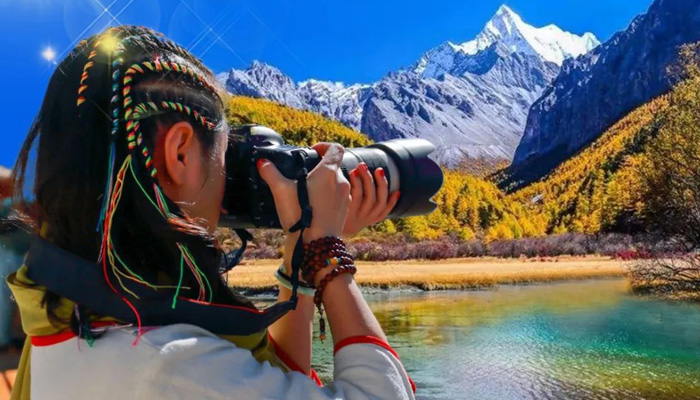 Visit scenic Tibetan areas of Sichuan on the Chengdu–Lhasa overland trip.
Visit scenic Tibetan areas of Sichuan on the Chengdu–Lhasa overland trip.2. Tibetan Parts of Yunnan
The Diqing or Deqen Tibetan Autonomous Prefecture is the only area in Yunnan Province with a large Tibetan population, making up about 34% of its residents. Once part of the Kham Region, Deqen consists of three counties, one of which Shangri-La, named after the famous valley from the novel Paradise Lost. Lying in the eastern edges of the Hengduan Mountains, this region is a great place for the ancient Tibetan way of life that still exists here.
3. Tibetan Parts of Gansu
In Gansu Province, the only area of Tibetan habitation is in the Gannan Tibetan Autonomous Prefecture. With around 52 percent of the population being Tibetan, Gannan was once a small part of the area known as Amdo in the time of the Tibetan Empire. While the area is on the very edge of the plateau, it is very Tibetan in the small towns and villages where the Tibetan populations live.
4. Tibetan Parts of Qinghai
Qinghai Province in northwest China has the largest Tibetan population outside the TAR, with over 1.4 million Tibetans—about 21% of its residents. Once a major area of Amdo Region, the area is hugely influenced by Tibetan ways and traditions.
Many tourists taking the Tibet train to Lhasa start from Xining, the provincial capital of Qinghai Hai. Here, you can visit the Taer Monastery, one of the six major monasteries of the Gelug School of Tibetan Buddhism and an important site to understand Tibetan religion and art.
 Ta’er Monastery is a famous Tibetan temple in Xining.
Ta’er Monastery is a famous Tibetan temple in Xining.Conclusion
While you may not be able to go backpacking alone in Tibet, you can join a small group tour to reduce the cost of the trip. Small group tours are also great for making friends and exploring areas of the TAR that you want to see. Alternatively, the surrounding provinces - Yunnan, Sichuan, Gansu, and Qinghai - are home to many Tibetan communities, where permits are not required, and backpacking is still possible.
If you have any questions or travel ideas, feel free to contact us or book your tour with us today. We’ll be happy to ensure you enjoy a smooth and comfortable journey in Tibet.
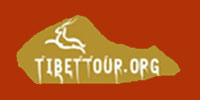




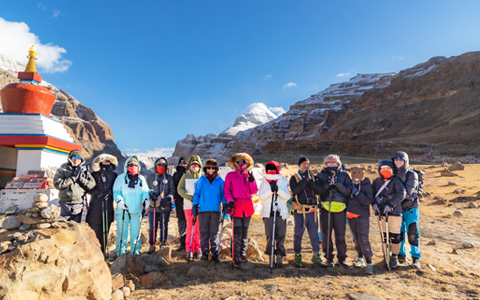


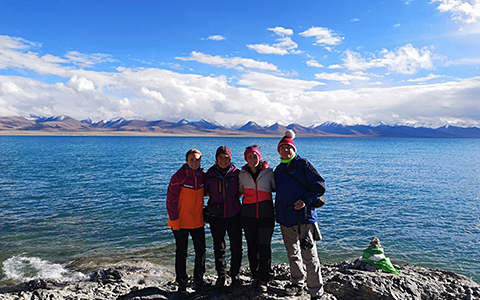
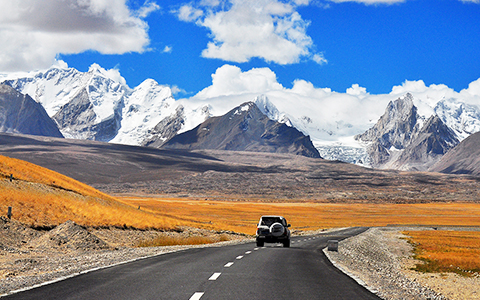

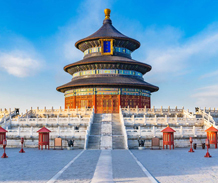

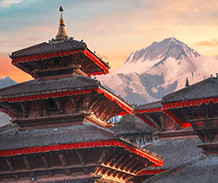
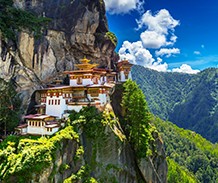


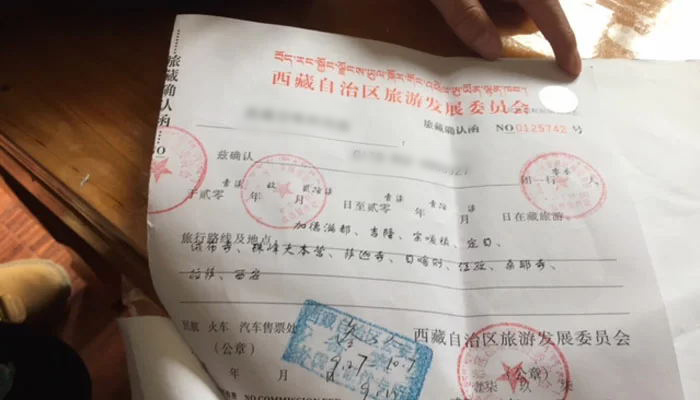
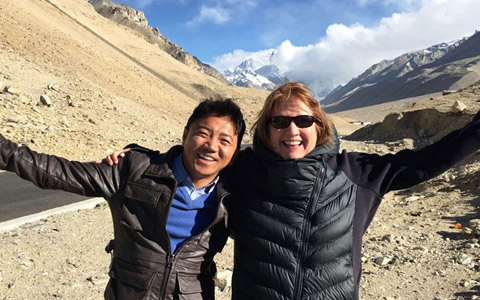
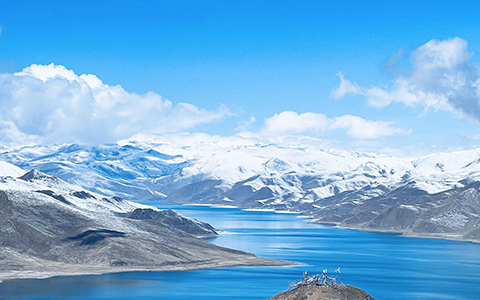
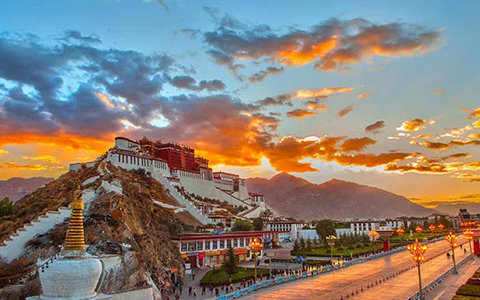
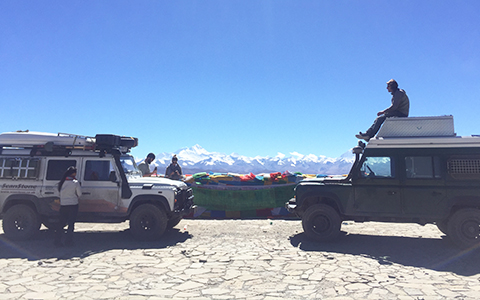


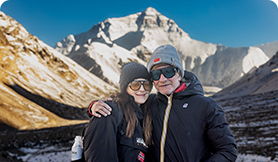


 A small group tour in Tibet is much more cost-effective than a private tour.
A small group tour in Tibet is much more cost-effective than a private tour. We offer a variety of small group tours, including the most popular route to Everest Base Camp.
We offer a variety of small group tours, including the most popular route to Everest Base Camp. An elderly couple of our clients enjoyed a smooth journey to Mount Kailash with our local guide.
An elderly couple of our clients enjoyed a smooth journey to Mount Kailash with our local guide. We arrange a lunchtime visit with a local family when you explore Yamdrok Lake.
We arrange a lunchtime visit with a local family when you explore Yamdrok Lake. You can save money while enjoying breathtaking scenery by taking the train to Tibet.
You can save money while enjoying breathtaking scenery by taking the train to Tibet. Our guests enjoyed Tibetan noodles and Tibetan momos in a local restaurant.
Our guests enjoyed Tibetan noodles and Tibetan momos in a local restaurant. Visit scenic Tibetan areas of Sichuan on the Chengdu–Lhasa overland trip.
Visit scenic Tibetan areas of Sichuan on the Chengdu–Lhasa overland trip. Ta’er Monastery is a famous Tibetan temple in Xining.
Ta’er Monastery is a famous Tibetan temple in Xining.
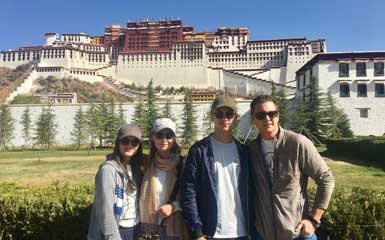
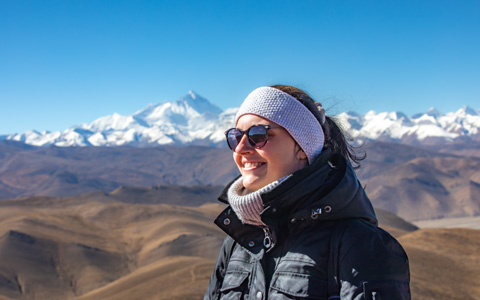

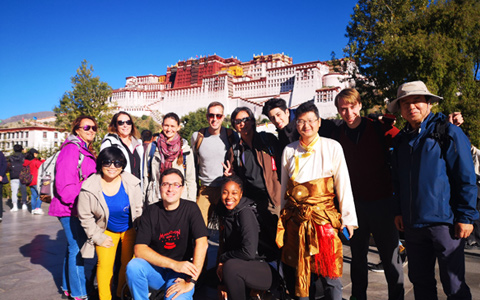
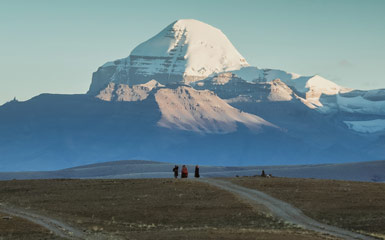
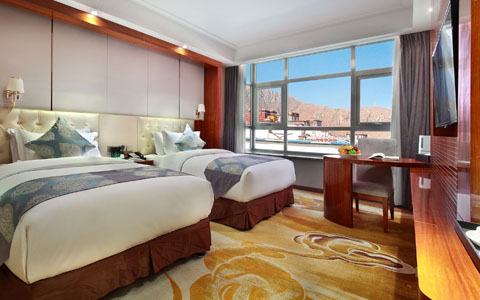
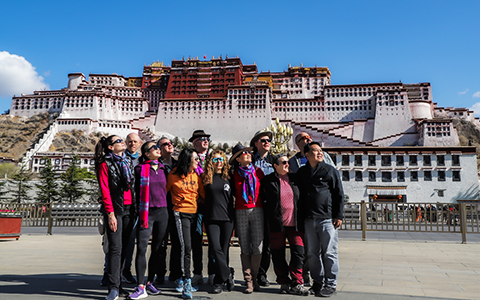
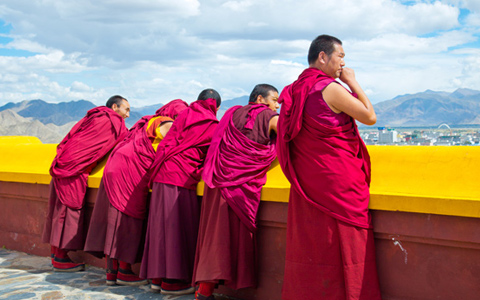
Ask a Quick Question